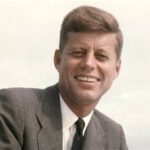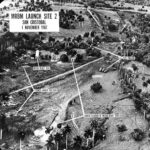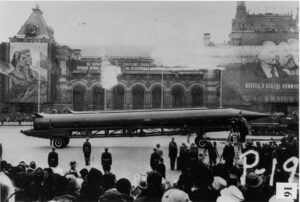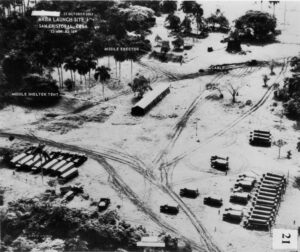
 Each American presidency is marked by a defining moment, an event that encapsulates its tenure. For John F. Kennedy’s presidency, the Cuban Missile Crisis stood as that pivotal event. The most intense phase of the crisis, often referred to as the “13 Days,” spanned from October 16, 1962, when President Kennedy was informed of the Soviet missile sites being built in Cuba, to October 28, 1962, when Soviet Premier Nikita Khrushchev declared the dismantling of the missiles. On October 22, 1962, when it came time to tell the American people about the situation, President Kennedy revealed in a televised address of profound significance, that American spy planes had detected Soviet missile bases in Cuba. This represented a very dangerous situation for the United States. The missile sites were still under construction, but they were close to completion, and they contained medium-range missiles with the capacity to hit several major US cities, including Washington DC.
Each American presidency is marked by a defining moment, an event that encapsulates its tenure. For John F. Kennedy’s presidency, the Cuban Missile Crisis stood as that pivotal event. The most intense phase of the crisis, often referred to as the “13 Days,” spanned from October 16, 1962, when President Kennedy was informed of the Soviet missile sites being built in Cuba, to October 28, 1962, when Soviet Premier Nikita Khrushchev declared the dismantling of the missiles. On October 22, 1962, when it came time to tell the American people about the situation, President Kennedy revealed in a televised address of profound significance, that American spy planes had detected Soviet missile bases in Cuba. This represented a very dangerous situation for the United States. The missile sites were still under construction, but they were close to completion, and they contained medium-range missiles with the capacity to hit several major US cities, including Washington DC.
Kennedy declared he was imposing a naval “quarantine” on Cuba to block Soviet ships from delivering additional offensive weapons to the island. He stated that the United States would not accept the current missile sites’ presence. The president emphasized that America was prepared to take military action to eliminate what he described as a “secretive, irresponsible, and provocative threat to global peace.”
The Cuban Missile Crisis, as it became known, began on October 14, 1962, when US intelligence, analyzing data from a U-2 spy plane, discovered that the Soviet Union was constructing medium-range missile sites in Cuba. The following day, President Kennedy convened a secret emergency meeting with his top military, political, and diplomatic advisers to address the grave situation. This group came to be known as ExComm, an abbreviation for Executive Committee. Opting against a surgical air strike on the missile sites, ExComm instead chose a naval blockade and demanded the dismantling and removal of the missiles. It was then, on the evening of October 22, that President Kennedy disclosed his decision on national television. Tensions continued to mount over the ensuing six days, to a critical point, and placing the world on the edge of nuclear warfare between the two superpowers.
On October 23, the United States initiated a naval “quarantine” of Cuba. However, President Kennedy opted to allow Soviet Premier Nikita Khrushchev additional time to contemplate the US maneuver by moving the quarantine line back 500 miles. By October 24, Soviet vessels bound for Cuba, capable of transporting military cargo, seemed to have decelerated, changed course, or turned around as they neared the quarantine zone, except for one ship…the tanker Bucharest. Following appeals from over 40 nonaligned countries, UN Secretary-General U Thant made private overtures to Kennedy and Khrushchev, imploring their administrations to “avoid any actions that might worsen the situation and pose a risk of war.” Under orders from the Joint Chiefs of Staff, United States armed forces escalated to DEFCON 2, the most critical military readiness level ever achieved in the postwar period, while commanders readied for an all-out conflict with the Soviet Union.
On October 25, the aircraft carrier USS Essex and the destroyer USS Gearing tried to intercept the Soviet tanker Bucharest as it breached the US quarantine of Cuba. The Soviet vessel did not comply, but the US Navy refrained from taking it by force, judging that it was unlikely to be carrying offensive weapons. On October 26, Kennedy was informed that construction on the missile bases continued unabated, and ExComm contemplated a US invasion of Cuba. The Soviets apparently felt the tension of their actions, because on that same day, they offered a deal to resolve the crisis: they would dismantle the missile bases in return for a United States guarantee not to invade Cuba.
The following day, Khrushchev escalated the situation by publicly demanding the removal of US missile bases in Turkey, influenced by Soviet military leaders. As Kennedy and his advisors deliberated over this perilous shift in negotiations, a U-2 spy plane was downed over Cuba, resulting in the death of its pilot, Major Rudolf Anderson. It looked like thing might have reached the boiling point, but despite the Pentagon’s dismay, Kennedy prohibited any military response unless further surveillance aircraft were targeted over Cuba. To alleviate the intensifying crisis, Kennedy and his team decided to dismantle the US missile installations in Turkey at a subsequent time, to avoid provoking Turkey, who was an essential NATO ally.
On October 28, Khrushchev declared his government’s decision to dismantle and remove all offensive Soviet weapons from Cuba. Following the broadcast of this public announcement on Radio Moscow, the USSR affirmed its readiness to adopt the resolution secretly suggested by the Americans the previous day. That afternoon, Soviet technicians started dismantling the missile sites, averting the imminent threat of nuclear war. The Cuban Missile Crisis had effectively ended. In November, Kennedy lifted the blockade, and by year’s end, all offensive missiles were removed from Cuba. Later, the United States discreetly withdrew its missiles from Turkey.
At the time, the Cuban Missile Crisis appeared to be a definitive triumph for the United States. In this, Cuba gained a heightened sense of security following the crisis. The withdrawal of obsolete Jupiter missiles from Turkey did not negatively impact the United States’ nuclear strategy. Nevertheless, the crisis spurred the USSR, feeling humiliated, to initiate a substantial nuclear arms expansion. By the 1970s, the Soviet Union had achieved nuclear parity with the United States and developed intercontinental ballistic missiles with the capability to target any city within the United States.
The presidents that followed Kennedy upheld his promise to refrain from invading Cuba, and the relationship with the communist nation, located a mere 80 miles off the coast of Florida, continued to challenge United States foreign policy for over half a century. Finally, in 2015, representatives from both countries declared the official normalization of United States-Cuba relations, encompassing the relaxation of travel bans and the establishment of embassies and diplomatic offices in each nation.
For Kennedy, this pivotal moment in his administration showcased his ability to manage a high-stakes international crisis. His decision to implement a naval blockade and negotiate with Soviet Premier Nikita Khrushchev helped avoid a potential nuclear war. It also demonstrated his leadership and diplomatic skills, as he balanced military readiness with diplomatic negotiations, which ultimately led to the removal of Soviet missiles from Cuba. The successful resolution of the crisis significantly boosted Kennedy’s public image, portraying him as a strong and capable leader who could protect the United States from external threats. The crisis was a defining moment in the Cold War, highlighting the intense rivalry between the United States and the 
 Soviet Union. Nevertheless, it also led to the establishment of a direct communication line between Washington and Moscow, known as the “hotline,” to prevent future crises. In summary, the Cuban Missile Crisis was a defining event that not only tested Kennedy’s presidency, but it also shaped his legacy as a leader who could navigate the complexities of international relations during one of the most dangerous periods of the Cold War.
Soviet Union. Nevertheless, it also led to the establishment of a direct communication line between Washington and Moscow, known as the “hotline,” to prevent future crises. In summary, the Cuban Missile Crisis was a defining event that not only tested Kennedy’s presidency, but it also shaped his legacy as a leader who could navigate the complexities of international relations during one of the most dangerous periods of the Cold War.


One Response to President Kennedy’s Defining Moment